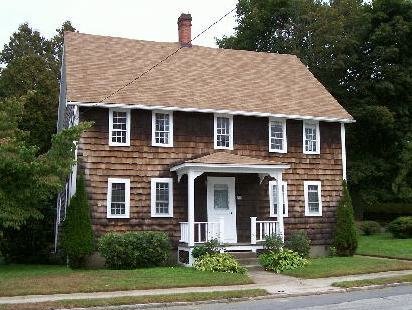

Above left: The maple section for the bench top. I am not particularly worried about the crotch -- let it contribute to the irregular, roughly-hewn outline of the bench top. And I am not too concerned about checks in the wood, either. Above right: Cutting a kerf around one of the posts.
Back in the fall, I removed an old silver maple that was in danger of falling, and saved the largest, clearest sections of the trunk for a future project: A hand-hewn workbench, modeled generally on the Roubo bench, which is an eighteenth century French design. The Roubo is a minimalistic joyner's bench and features a very heavy slab for a top. (An example can be seen here).
So, where on earth does one find, say, a 5" thick hardwood slab, of just about the right width and length? Well, I just happen to have one! Only I need to liberate it from one of the larger maple sections. Although I had started this project back in the fall, more pressing things crept into my schedule, making it necessary for me to put this project off for a while. However, the recent clear winter days have motivated me (despite the severe cold snap) to go back outside and re-start this effort.


Above left: My antique cross-cut saw. Above right: Using it to complete the cut in the post.
Today, I set out to get the maple section properly cradled in preparation for hewing. I cut two 6x6x8 posts of pressure treated pine in half to use as the basis for a good, stable cradle. Having two 6x6x4 "blocks" at each end means that one of them can serve as a stable lifting surface (i.e., using a log jack) while working-in large wedges between the log and top of the neighboring block. My 7-1/4" circular saw wasn't quite big enough, of course, to completely cut the post, so I just cut a kerf around the center of each post, and used a hand saw to finish the cut.
Then, I moved the maple section on top of the blocks using a peavy, and placed a few temporary wedges underneath it. My next step will be to more precisely angle the log, and then completely stabilize it, prior to marking the cutting lines. But this was just the right amount of effort to make for a nice break on a sunny, winter afternoon, and accomplish something both useful and fun.
Above left: The maple section cradled, sans some final angling and additional wedges/shims prior to laying-out the scoring lines. Above right: My Iltis single-bit felling axe is really sweet -- who cares if it's not exactly a traditional pattern? I'll be using it to score the log.















4 comments:
I think this is a great idea!
Thanks very much, Sandy! Although I have a feeling my muscles are going to end up disagreeing with you! LOL! :-)
Looking forward to seeing how this turns out! A lot of hard work!
Thanks Shelley! Am likewise looking forward to seeing how this one works out!
Post a Comment